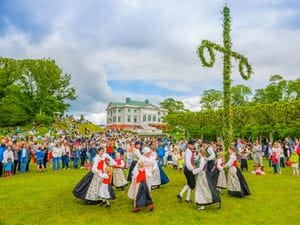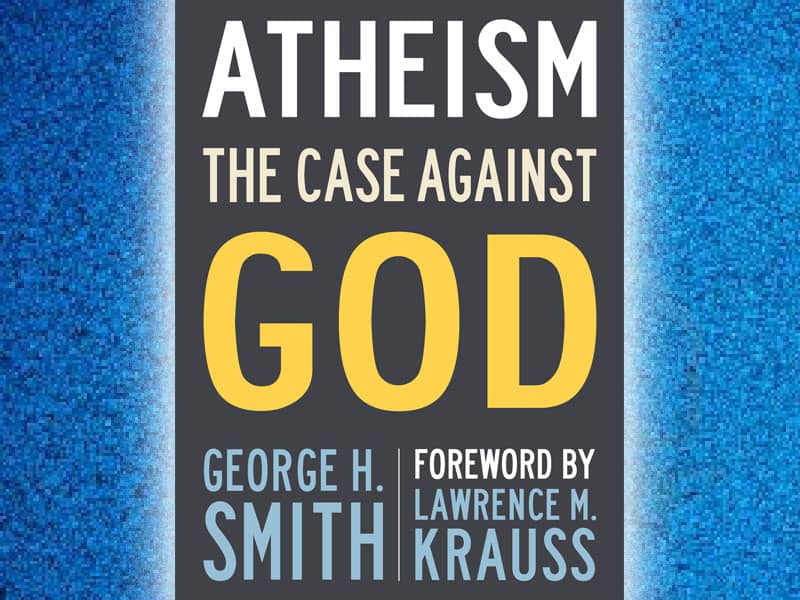
Falling on May 1st, May Day marks the end of the winter half of the year in the Northern Hemisphere, and is traditionally a day of celebration and revelry in many cultures around the world.
Our contemporary incarnation of May Day might bring to mind simple images of children dancing around a festively decorated Maypole and engaging in foot races, but this holiday has surprisingly deep roots that tap into ancient pre-Christian customs relating to fertility, agriculture, and the spring equinox.
May Day was once the premier summer holiday in many ancient European pagan cultures, where the beginning of February marked the beginning of spring, May 1st marked the beginning of summer—the season of growth and life for crops, animals, and people.
Although the origins of May Day are difficult to pinpoint, we can trace our modern festivities back to a few different celebrations, most of which come from pagan traditions. We can still see many elements of those traditions in the flowers, colorful ribbons, and tall poles that mark May Day today.
Let’s take a brief look at these origins.
Beltane
Pagan celebrations often arose from the needs of the community, and May Day was no different. May Day probably arose from the Celtic holiday, Beltane, which was celebrated in ancient Ireland, Scotland, and the Isle of Man. This was one of four Gaelic seasonally-based festivals, which include Samhain, Imbolc, and Lughnasadh. Beltane, however, was one of the most important.
The ancient Celts were a pastoral people, completely dependent on the land and their herds of livestock. Beltane fell at the beginning of the season that saw herds of livestock shepherded out of the summer pastures and grazing lands. Rituals, at this time, were performed that were thought to protect crops, livestock, and people, and to encourage reproduction and growth.
Spirits were also said to be capable of crossing over into the world of the living at this time, and the Celts sought to appease them in order to have a more prosperous year.
These rituals revolved around the lighting of bonfires in the mountains on the eve of Beltaine. The druids of the community would create these fires and drive the village cattle between them so that the livestock might be purified and brought luck. People would also pass between these fires to gain the same benefits.
Another custom of Beltane—a familiar one that would form the basis of the Maypole—was the erection of May Bushes, which usually consisted of a branch of rowan or whitethorn in bloom. These branches would be decorated with painted shells, ribbons, and flowers, and it was customary for a community to decorate them together and hold dances around them. This was believed to bring blessings to the village from tree spirits.
The Festival of Flora
The ancient Romans, over 2,000 years ago, celebrated a holiday called Floralia—the Festival of Flora—on the 1st of May. This was a five-day-long ritual that honored the Roman goddess of flowers. Flora, one of the oldest goddesses of the Roman religion, had her own state-sanctioned high priest, known as the flamen Florialis.
This, like Beltane, was a festival that celebrated growth and fertility, and was marked by dancing, flower-gathering, and the wearing of colorful garments. This was also a time for games.
The festival opened with theatrical shows and attractions that included a tightrope-walking elephant, and ended with competitive games and a sacrifice to Flora. Celebrants wore garlands of fresh flowers and scattered seeds to promote a bountiful crop.
Walpurgis Night
During the Middle Ages, these traditions were Christianized, as were many other pagan holidays of the time. In an effort to stamp out pagan cultural elements, many Popes established religious holidays that fell on the same days as pagan rituals, incorporating their elements into a Christian framework.
At one point, May Day took the form of Walpurgis Night, which was a German celebration that focused on Saint Walpurga, and 8th century Roman Catholic missionary and abbess. On this night, celebrants across Europe light “Easter fires,” dance, feast, and perform rituals focused on fertility and love in a carnival-like atmosphere.
May Day was also subsumed by Mary’s month, with May Day being a celebration of the Virgin Mary. During this day, effigies of Mary were adorned with flowers, and May baskets of pastries and flowers were anonymously left at peoples’ doors.
Contemporary May Day
Today, May Day has made somewhat of a resurgence as a secular and pagan holiday in America and Europe, and celebrations vary greatly across different regions. Surviving customs include the signature wooden Maypole, and the practice of dancing around it while holding colorful ribbons that intertwine and unwind about the pole. This is thought to symbolize the lengthening of days during this part of the year.
Morris dancing, named after 13th-century Moorish dancers, is also a common sight on May Day across the world. Their stomping feet and clashing sticks bring to mind the clash of summer and winter, resulting in summer’s eventual triumph.
In England, May Day is especially beloved, and remains a deep-seated tradition celebrated in most towns and communities. These English traditions include crowning of a May Queen, and annual processions of Morris dancers that parade through towns—these modern celebrations often incorporate elements from Beltane, the Festival of Flora, and Walpurgis Night.
In the United States, the celebration of May Day was initially quashed by early Puritan settlers, and so celebrations are fewer, and vary greatly from region to region. Among the largest is the May Day Parade and Pageant that occurs ever year in Minneapolis, and attracts over 35,000 people from all over the country.
Another American May Day custom is the giving of May baskets—someone leaves a basket of sweets and flowers on a doorstep, rings the bell, and runs away. If the recipient manages to catch the basket-giver, a kiss is exchanged.
A Celebration of Growth
All of the sources of what we now know as May Day have roots in celebrations of growth and fertility, and so this remains the core of this summer holiday, no matter where it is celebrated.
This May Day, don't forget to pay thanks to these life-giving qualities of summer as you engage in fun and dance!

